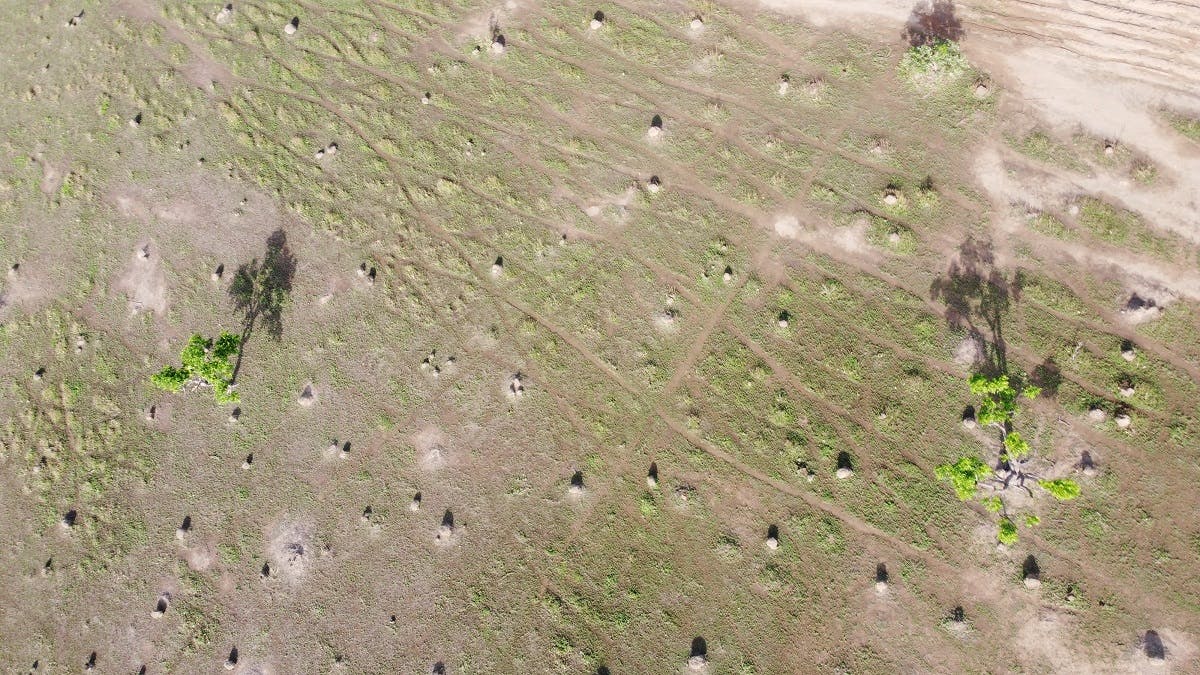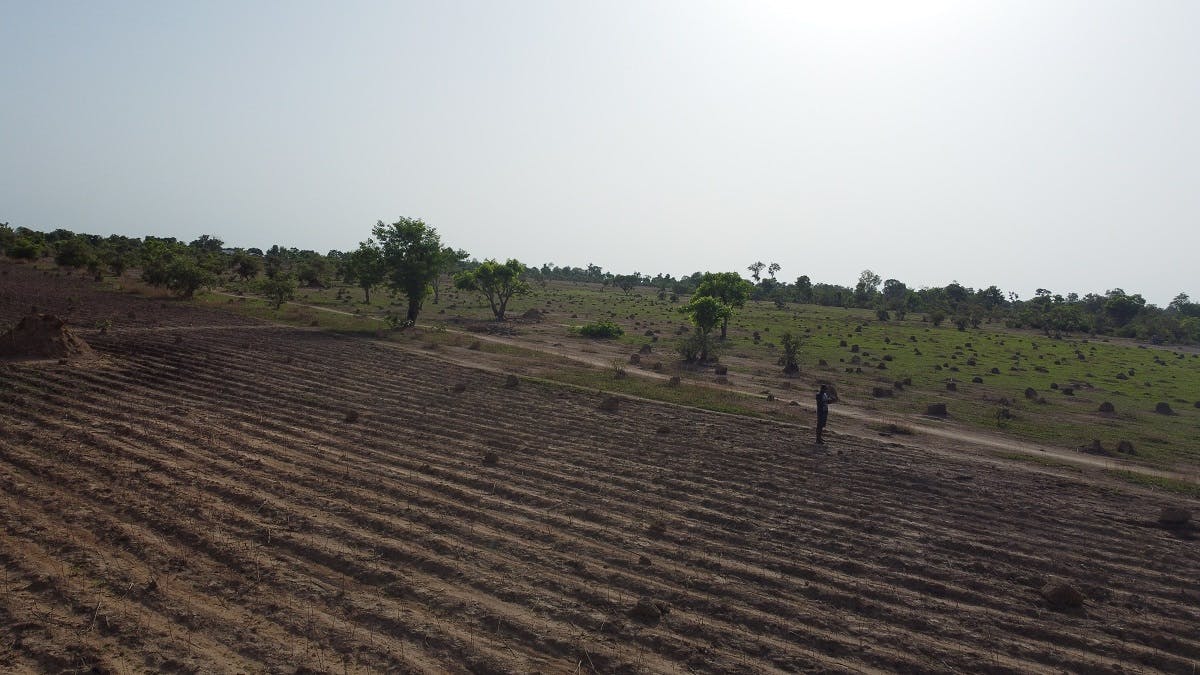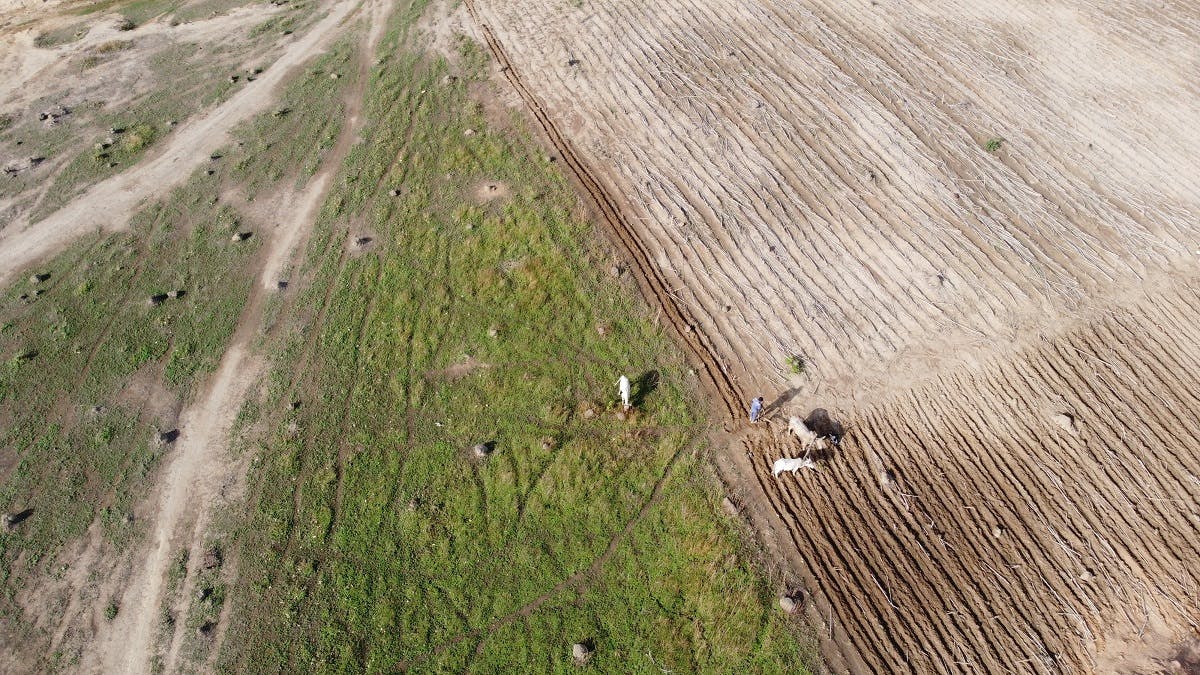- Termites - the forgotten insect?
- More about these ecological engineers
- What do termite mounds look like? and what's impressive about them?
- The Situation in Benin, West Africa
- The Threats to Termite Mounds
- The Goal of this Project
- Phase 1: Fill key knowledge gaps
- 1. Drone mapping termite mounds and vegetation
- 2. What plants do termites feed on?
- 3. Can we reproduce termites in captivity?
- Phase 2: Reversing Desertification Trial
- Time to start testing
- The Species
- Partnerships & Funding
- Project Podcast
- Management Plan
- Total budget: £90,216
- Budget spent: £29,525
- Status: In Progress
Nature works wonders. Termites and their mounds are a prime example. These little ecosystem engineers build mounds that aren't just aesthetically impressive, but also have an important ecological role in protecting savannahs against desertification. In the construction of their mounds, termites alter the soil structure so it retains more water. Their behaviour also increases the concentration of nutrients in the soil. These effects generate "islands of fertility" which often have a greater diversity and abundance of vegetation. Although these impacts are well researched, termites are rarely considered in direct conservation or restoration work. This long-term project aims to explore methods of reversing desertification and land degradation in areas of Benin, West Africa using termites, native plants, soil and water conservation techniques.
Project Timeline
Jul 24 - Jun 26
Monitor restoration trials and process data
Jun 24
Start the restoration trial
Termites - the forgotten insect?
Even though numerous studies have demonstrated that termites can be powerful ecosystem engineers, very little research has been done on how we may harness their influence when working to restore degraded ecosystems. This case is made clear in a recent article titled that suggests termites are a forgotten insect in the field of restoration ecology. In another article, the authors stress that studies are needed that actually test the use of introduction of soil invertebrates as a means to accelerate and increase the success rate of dryland restoration efforts. In other words, this is an area that is ripe for innovations that could have a wide scale impact.
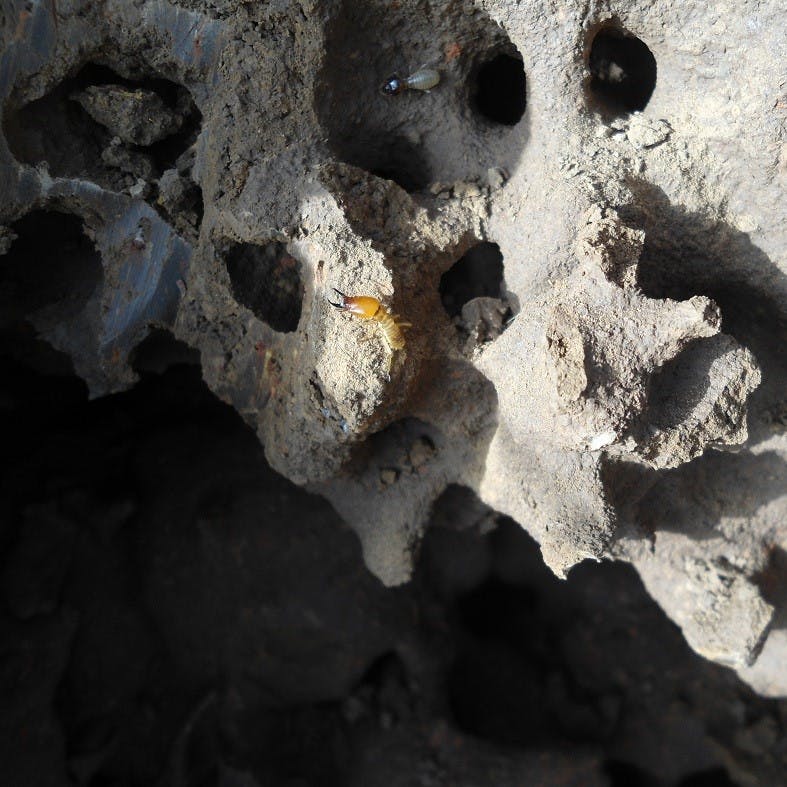
More about these ecological engineers
Before we explain the details of this project, let’s take a closer look at termites and the incredible impacts of their mounds.
What do termite mounds look like? and what's impressive about them?
Termite mounds are an architectural feat of the natural world. These large tower-like structures built by termites out of soil can reach a colossal 5 metres high - the tallest structure of any non-human animal and capable of housing a million termites! Not all mounds are huge though with sizes varying depending on the species and location, some are only several centimetres tall.
Inside the mound a complex network of tunnels, corridors, and shafts are built by a colony of termites working in complete coordination. Such is the sophistication of the design that termite mounds have inspired designs of natural cooling systems in some commercial buildings. The internal structure allows for the circulation of air, regulation of temperature and gas exchange. A chamber below ground hosts the queen in what can be described as one of nature’s most robust fortresses. A claim possibly proven by the fact that termite queens are thought to be the longest living insect on earth, up to 45 years!
More impressive perhaps, is the ability for these mounds to help fight off droughts and desertification. The system of tunnels within termite mounds allows water to infiltrate the soil better. Also, they bring plant material to their mounds which fungi decompose, changing the soil composition and structure. These effects help retain moisture better and provide nutrients for plants. This means plants have a better chance of surviving and recolonising from the first rainfall following dry periods.
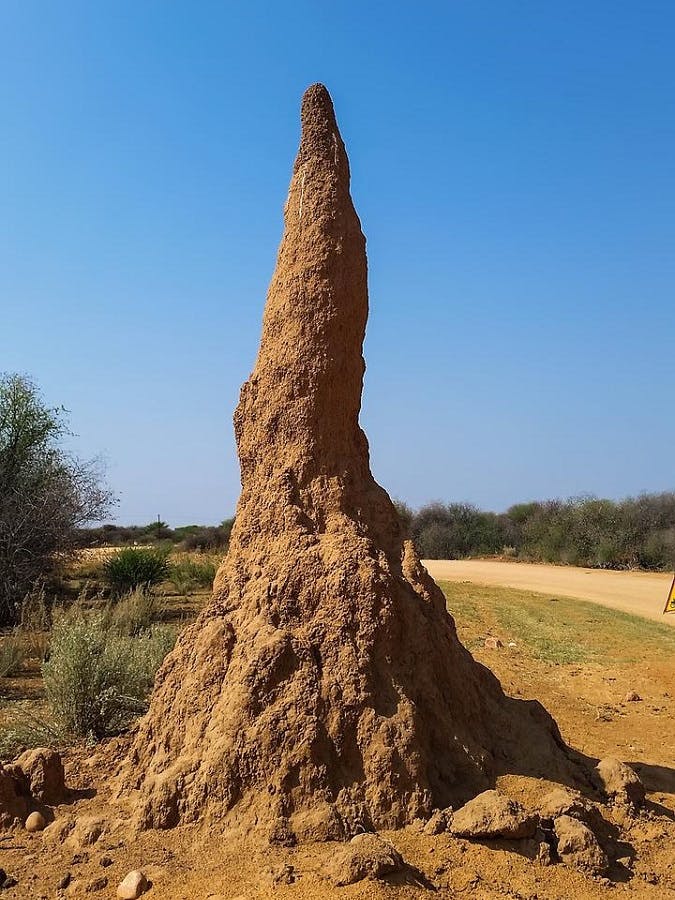
The Situation in Benin, West Africa
This project is targeting termite mounds in the semi-arid area of northern Benin where areas of degraded lands are known as Bowé. They’re suffering from the process of degradation called Bowalization which is the result of soil erosion and soil hardening caused by drought and desertification. This is leading to:
- a reduced capacity to retain water;
- a shallow topsoil and;
- low levels of organic matter, silt and nutrients but high amounts of potassium.
These impacts have negative consequences for the vegetation structure in the area. In the grasslands or savannahs the vegetation is typically dry forest, woodland, tree and shrub savannah and gallery forest. Bowalization is also causing a loss of biodiversity.
The rate of bowalization is occurring at an alarmingly increasing rate (10 hectares/year from 1990-2010) in the Sudanian region of Benin. Up to 53% of the region, which makes up 6.7 million hectares of Benin, has become degraded savannah and farmland.
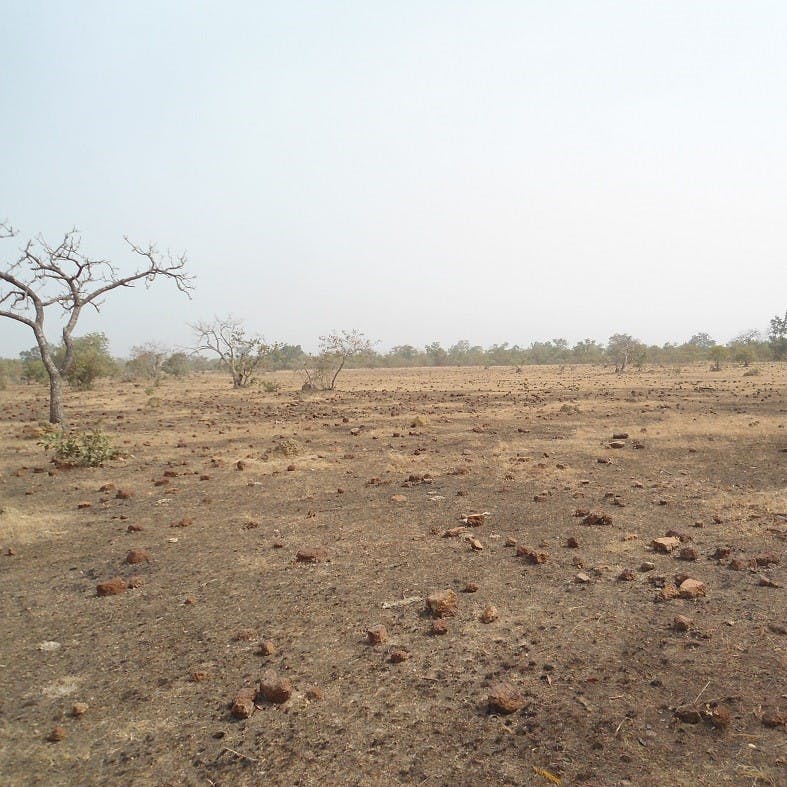
The Threats to Termite Mounds
Although termites themselves are not considered at risk of extinction, their mounds face several threats including:
- climate change
- increasing drought frequency and intensity
- human disturbances
- poor fire management
In the case of human disturbances, mounds are often destroyed by local people. Some farmers remove mounds because they see termites as pests and are unaware of their water-saving capabilities, thus weakening their own defences against the encroaching desert.
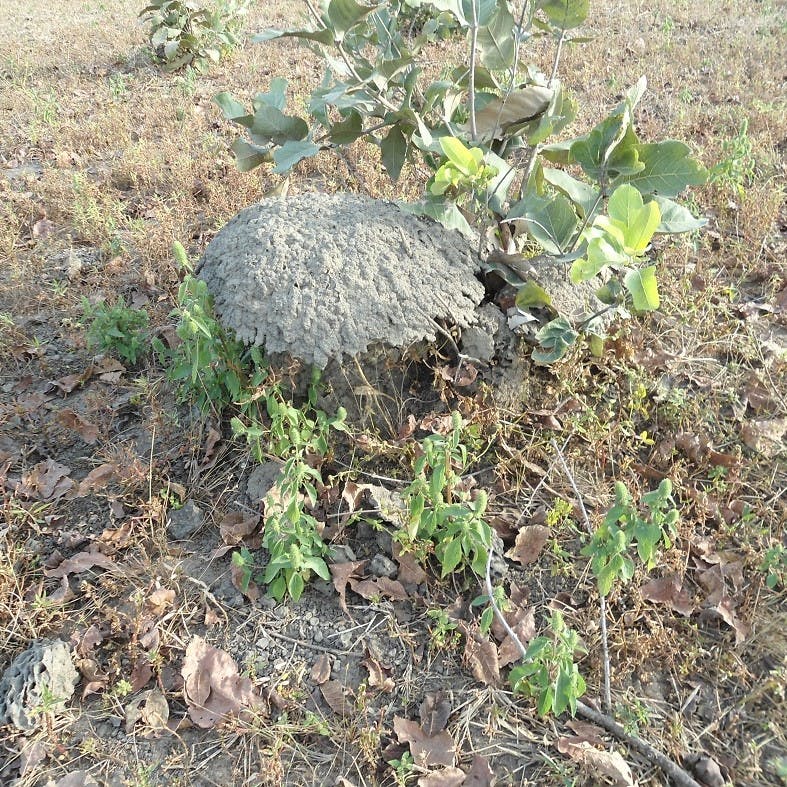
The Goal of this Project
The long-term objective of this project is to prevent and revert the process of bowalization in Benin by:
- promoting termite mound conservation in the region and;
- developing and implementing methods to use termites for ecosystem restoration.
A vital component of this project’s objectives involves addressing the knowledge gap in termite mound conservation. Specifically, knowledge of the distribution of termite mounds and monitoring their changes over time.
Further to this, the project sets out to assess the feeding preferences of termites from the region. Gathering this information will contribute to the knowledge needed:
- reproduce termites in captivity;
- to determine which sites are suitable for termite re-introductions;
- to identify any other necessary measures for re-introductions of termites.
Providing the development of a captive breeding methodology is successful, this research can be used as a model for future restoration efforts elsewhere.
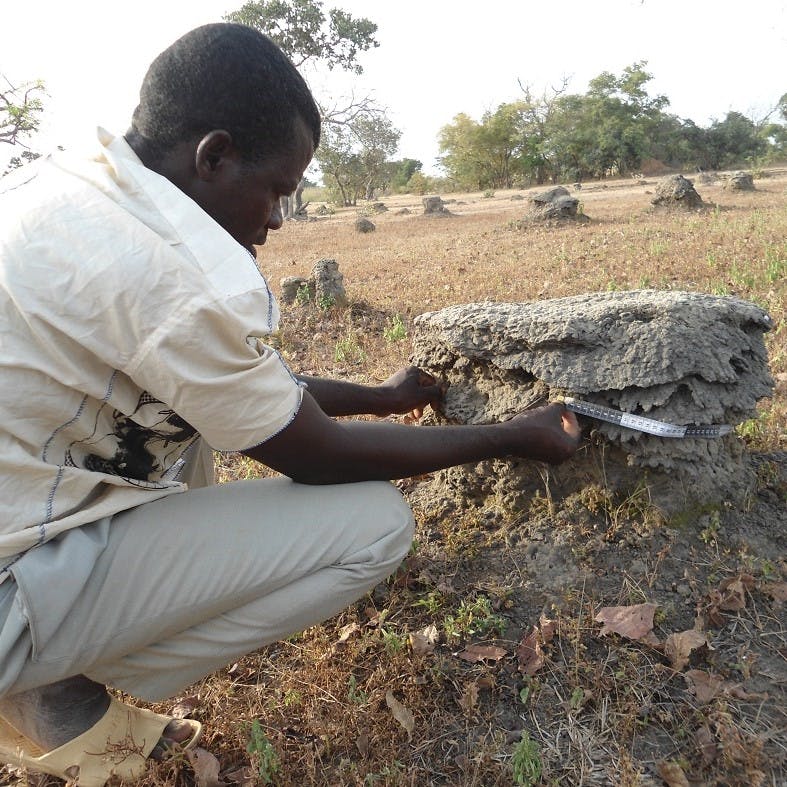
Phase 1: Fill key knowledge gaps
The first phase of the project aims to fill key knowledge gaps that hinder our ability to both protect and restore termite mounds in Benin.
1. Drone mapping termite mounds and vegetation
The first objective of the project is to test drone mapping as a way to monitor termite mounds and vegetation over large areas in a cost-effective way. This is important because it will allow us to collect the data we need to better understand how the different components of the ecosystem are interacting to influence its vulnerability to desertification. This in turn will inform our restoration approach. We also expect that collecting this fine scale data over space and time will help plan efforts to preserve termite mounds in these areas where they are still playing their important ecological function.
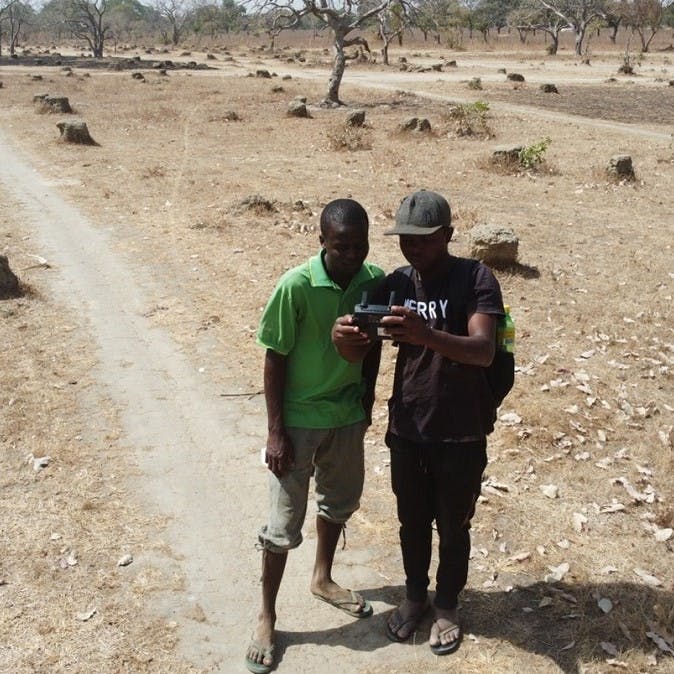
2. What plants do termites feed on?
Another question we are addressing has to do with the feeding preferences of the termites. We want to know which plant species they tend to feed on so we know which combinations of plant and termite species we should combine in restoration trials. Termites will be collected and taken to the lab for feeding tests. These tests involve exposing the termites to different plant species and monitoring their feeding behaviour. We expect that findings from the drone mapping and the feeding tests will compliment each other and will give us a better picture of what conditions the termites need to thrive.
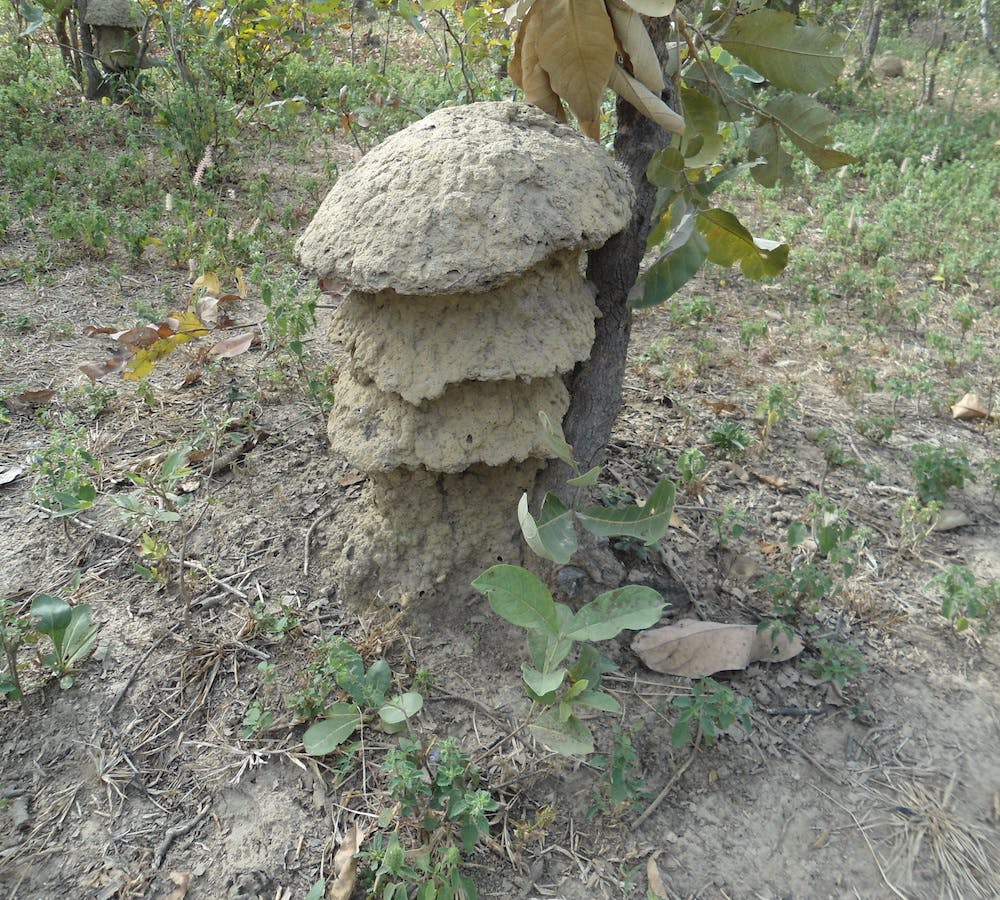
3. Can we reproduce termites in captivity?
Finally, we will also be attempting a captive breeding experiment. In the lab, different conditions will be recreated and tested to determine if successful breeding takes place. Having termites form colonies in captivity would:
- facilitate more testing;
- reduce the need to study the termites in their mounds in remote locations;
- provide a source of termites to re-introduce to the habitat if they aren’t recolonising naturally in the ecosystem.
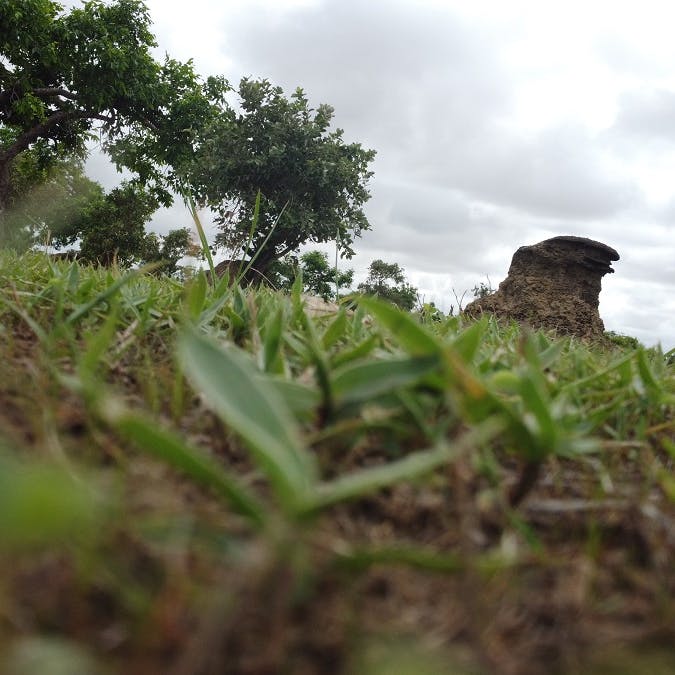
Phase 2: Reversing Desertification Trial
Time to start testing
For the second phase of the project, we will apply what we have learned in a small trial to reverse desertification in Benin. If we want to use one of nature’s most impressive ecosystem engineers to restore degraded drylands, we actually have to start the trial and error process and that's what this next step is all about. The trial will happen close to Benin's National University of Agriculture where it will also provide students with an opportunity to learn about ecological restoration first hand.
The trial will involve planting native tree species that have been found to be especially resilient to drought. This will be done in the form of a carefully designed ecological restoration experiment that will allow us to compare different approaches and learn what works best. Some of the variables we will be testing are:
- Seed type: seeds collected from wild trees vary in size and shape and it is important to know if this affects germination success and survival rates.
- Type of traditional water harvesting technique: Zai and half-moon are two different traditional approaches to shape the soil around planted trees to maximise water retention and tree survival. We want to know which of these works best in this type of degraded land.
- Termite colonisation: We want to know if termites will start colonising the site without being directly introduced.
- Termite introduction: We want to know if termites can be introduced successfully and if this improves the restoration outcomes.
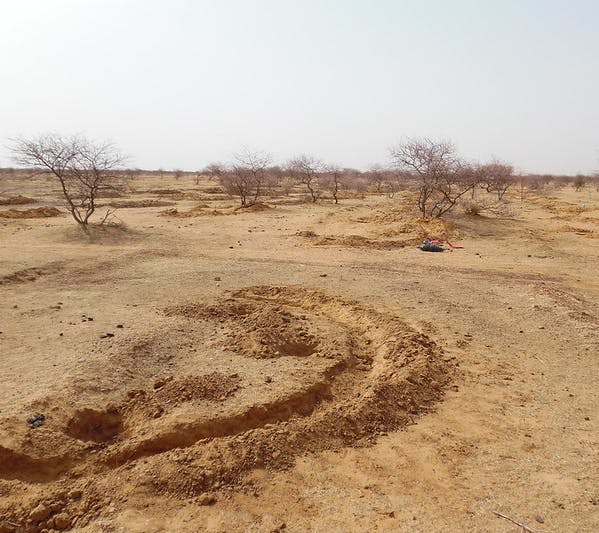
The Species
The termite species this trial will be focusing on are Cubitermes spp, Trinervitermes geminatus, Trinervitermes trinervius and Microcerotermes bellicosus as these are the most abundant species on bowé.
The plant species are identified as the most adapted to bowalization and most resistant to climate change. These are Asparagus africanus, Andropogon pseudapricus and Combretum nigricans in the semi-arid climate zone and Asparagus africanus, Detarium microcarpum and Lannea microcarpa in the sub-humid climate zone.
Impact on the Community
Any success at turning degraded and lifeless land back into a productive ecosystem will be beneficial both for biodiversity and for the local community. By restoring bowé, more grazing space will be available to local herders whose cattle feed on annual grasses in surrounding areas during wet season. The trees we are planting also provide all kinds of food products and materials when they mature which can be exploited in a sustainable way.
Project results will also be disseminated during fieldwork and meetings with local NGOs, local training institutions, decision makers associations and communities. The idea is to share best practices so that existing areas are managed in a way that helps halt desertification and so that efforts to restore degraded lands in Benin are done using the latest evidence.

Partnerships & Funding
This project provides an important opportunity for our partners at Benin’s National University of Agriculture to develop useful know-how. Dr. Elie Padonou, who is leading the project is already an expert in this field but he is taking this opportunity to mentor Caleb Babatunde, his Master’s student. In this way, we hope that will also be contributing to the formation of the next generation of researchers in a part of the world that really needs them but where funding can be hard to find.
All of this is made possible by the contributions of our members, who provide the funding through their monthly membership, and our business partners, Not Just Travel that have specifically supported this project.
Pix4D, a drone mapping software company, has kindly offered to sponsor our use of their software for this and other Mossy Earth projects. This is part of their ambition of using their technology to support nature conservation and restoration projects.
More updates on this project will be released in an upcoming video. Don’t miss it by subscribing to the Mossy Earth YouTube channel.

Drone Mapping Images
Below are some images captured during the drone mapping stage that show the potential of termite mounds to help 'green' the area.
Project Podcast
A conversation with project manager, Tiago, on how this project came about and the promising potential of using termites to fight desertification in Benin.
Sources & further reading

- “Termites in restoration: the forgotten insect?” - Restoration Ecology
- “Soil fauna and its potential use in the ecological restoration of dryland ecosystems” - Restoration Ecology
